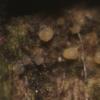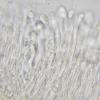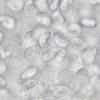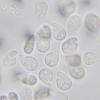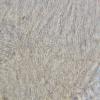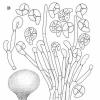
18-12-2025 21:17
Pol DebaenstThe identification took me to Byssonectria deformi

15-12-2025 07:09
 Danny Newman
Danny Newman
indet. Rutstroemiaceae sp. on unk. fallen leavesMc

19-12-2025 10:10
Patrice TANCHAUDBonjour, récolte réalisée en milieu dunaire, a

18-12-2025 17:23
 Bruno Coué
Bruno Coué
Bonjour,je serais heureux d'avoir votre avis sur c

18-12-2025 18:07
Margot en Geert VullingsThese plumes were found on rotten wood.They strong

17-12-2025 18:35
 Michel Hairaud
Michel Hairaud
Bonjour à tous/Hi to everyone I am passing along

15-12-2025 15:48
 Danny Newman
Danny Newman
Melanospora cf. lagenaria on old, rotting, fallen

15-12-2025 15:54
 Johan Boonefaes
Johan Boonefaes
Unknown anamorph found on the ground in coastal sa

15-12-2025 21:11
 Hardware Tony
Hardware Tony
Small clavate hairs, negative croziers and IKI bb
Asexual morph
Gernot Friebes,
05-11-2015 18:19
this curious asexual morph was found on a wet and decorticated Fagus trunk. The conidia are about 9-11 µm long and have three septa. Maybe someone recognizes it. :-)
Best wishes,
Gernot
Alain GARDIENNET,
05-11-2015 18:30
Re : Asexual morph
Hi Gernot,
Perhaps around Helicomina ?
Alain
Chris Yeates,
05-11-2015 19:46
Gernot Friebes,
07-11-2015 10:48
Re : Asexual morph
Hi Alain & Chris,
Hyalotrochophora indeed cought my eye when looking through The Genera of Hyphomycetes and using the key I also arrived at that genus. I contacted Keith Seifert and he agreed that the morphological similarities to the type and other Canadian collections of H. lignatilis are very high. He also mentioned that it would be nice to compare sequences of this collection with Canadian material to see if they are actually the same species. So I think for now we can assume that this collection is indeed H. lignatilis or a closely related species.
Thanks again to everyone involved!
Best wishes,
Gernot
Hyalotrochophora indeed cought my eye when looking through The Genera of Hyphomycetes and using the key I also arrived at that genus. I contacted Keith Seifert and he agreed that the morphological similarities to the type and other Canadian collections of H. lignatilis are very high. He also mentioned that it would be nice to compare sequences of this collection with Canadian material to see if they are actually the same species. So I think for now we can assume that this collection is indeed H. lignatilis or a closely related species.
Thanks again to everyone involved!
Best wishes,
Gernot

